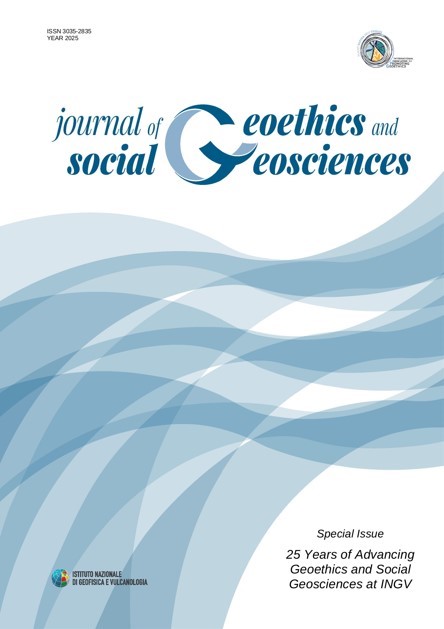Communication strategy for volcanic hazard understanding in Italy: The role of INGVvulcani team
Main Article Content
Abstract
Communication by public institutions about volcanoes and their activity is crucial in Italy, where many active volcanoes are in inhabited areas. In recent years, in addition to traditional conferences, science festivals, open days, and seminars, communication efforts towards the public have been carried out through 2.0 and 3.0 web activities, based on blog and social media, to establish a dialogue with non-experts. This is particularly important for research institutes like the Istituto Nazionale di Geofisica e Vulcanologia (INGV, National Institute of Geophysics and Volcanology), which is responsible for monitoring Italian active volcanoes and collaborates with civil protection authorities in emergency planning. Since the birth of INGV in 2000, the many branches of the institute have been strongly involved in communication with media and outreach activities. Recently, INGV has improved its communication about volcanoes. The blog ingvvulcani.com was launched in 2018, followed by associated INGVvulcani Facebook, Twitter, and Instagram pages. According to modern volcano risk communication practices worldwide, the INGVvulcani blog and social media are used to provide comprehensive and timely information on volcanic activity and its impacts, particularly focusing on Italian volcanoes. We publish a range of content including real-time updates on volcanic eruptions and activity, bulletins, scientific analyses, educational articles, and multimedia resources, adapting our strategy to volcanic activity levels, providing general information during dormancy and real-time updates during crises. INGVvulcani’s approach prioritizes transparency, accessibility, and engagement, using blogs and social media to foster informed discussions. Social media insights highlight strong public interest and trust, but further qualitative analysis, including sentiment studies and surveys, as well as professional engagement could help to address challenges like misinformation and enhance communication strategies in the future. Our aim is to disseminate scientific knowledge, enhance awareness of volcanic hazards, and promote a culture of preparedness and safety, especially for people living in areas near active Italian volcanoes who need to be accurately and constantly informed about volcanic hazard and monitoring, in collaboration with national and local Civil Protection authorities.
Article Details
Issue
Section

This work is licensed under a Creative Commons Attribution 4.0 International License.

